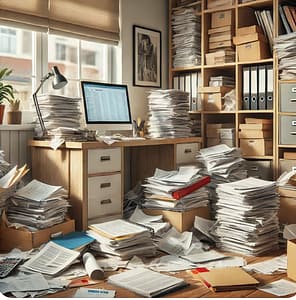Like most people (at least the ones I know), I started the year with great intentions. But that’s all they were—until a few years ago when my eldest daughter shared how she plans for the new year starting in December.
At first, I didn’t think much about her process. I’d always been task-oriented and focused on what needed to get done, both in my work and personal life. I was a planner with endless checklists, and while I accomplished plenty, it was hard to measure what I’d achieved over 365 days, 8,760 hours, or 525,600 minutes. Looking back, I realized I wasn’t tracking my progress in a meaningful way.
Last year, inspired by my daughter, I planned my entire year—not month by month, but task by task. My list lived on my phone, where it was easy to access and check off items. I organized it into three categories: Personal (household chores, self-care, etc.), Financial (budgeting and organization), and Writing (how many novels I’d write, classes I’d take, and social media goals to connect with readers).
 Did I achieve everything? No, but I got about 75% of my tasks done, and I had a LOT on that list. My husband teases me for trying to fit five pounds into a two-pound bag, but I’ve learned that having a plan—even an ambitious one—gets me further than having no plan at all.
Did I achieve everything? No, but I got about 75% of my tasks done, and I had a LOT on that list. My husband teases me for trying to fit five pounds into a two-pound bag, but I’ve learned that having a plan—even an ambitious one—gets me further than having no plan at all.
After publishing my most recent book, Across Oceans Through Time: A Story of Enduring Love, I dedicated December to planning the year ahead. Using the same three categories, I rolled over unfinished tasks from the previous year and added new ones. Unfortunately, life threw a curveball: both my husband and I fell ill during our Christmas road trip to visit family. As a result, I’m still finalizing my plan, but I’ve embraced the mantra: better late than never.
 One of my goals this year is to return to writing short blog posts. I’ve missed blogging and realized how much I enjoy it. So here I am, sharing not just my planning journey but also some practical tips that has helped me tackle one of life’s dreaded chores: managing paper clutter.
One of my goals this year is to return to writing short blog posts. I’ve missed blogging and realized how much I enjoy it. So here I am, sharing not just my planning journey but also some practical tips that has helped me tackle one of life’s dreaded chores: managing paper clutter.
The key question: what do you keep, and what do you pitch? Here’s my system:
One Month (For Paper Lovers)
One to Three Years
At Least Seven Years
Forever (Stored in a Fireproof Safe)

For shredding, I keep a banker’s box in the garage. Each year, I take it to a community shredding event and start fresh.
Everyone’s method will differ, but the key is finding a process you’ll stick with. What works for you? I’d love to hear your tips—maybe I’ll learn something new!